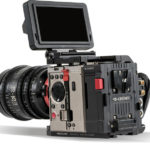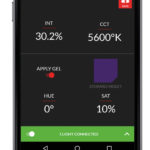
Review: DJI Zenmuse X7
Posted on Jun 18, 2018
 Working at over 4000m and -30°C is a real test of any drone – and the human operator.
Working at over 4000m and -30°C is a real test of any drone – and the human operator.
Ever since DJI bought Hasselblad we’ve been waiting for bigger sensors for the drone market. Now here’s the Zenmuse X7 camera
DJI’s is an amazing story: becoming a powerhouse of innovation that has just about taken over the drone world, save the heavy-lift part that embeds separate cinematic cameras. In fact, from the heavy-lift drone point of view, it was this seeming lack of true cinematic imagery that was used as a stick with which to beat DJI.
The company’s purchase of Hasselblad in 2016 caught everyone’s attention as it opened up a world of larger sensors and respected lenses for the drone company.
Dealing with DJI can be frustrating or abrasive, especially if you want to be first to a certain product. Some of the problems are teething ones while others are quality control, but you work around these things.
Straight out of the box you can tell that the Zenmuse X7 is a beautifully engineered piece of kit, but perhaps better than that is the new glass. This is a big step up from the X5S camera, which used third-party and rebranded glass. These new lenses are DJI’s own. The move closes DJI’s ecosystem as the D mount is its own innovation. This makes perfect sense; support now is easier as they are not trying to reconcile working with and supporting other brands. The four new lenses – all primes: 16mm, 24mm, 35mm and 50mm – are designed to work perfectly with the camera, both optically and balance wise, which eliminates many problems. If you work with lens adapters, you’ll run into all sorts of problems that DJI’s support can help with.
 Grab is Jungfrau research station
Grab is Jungfrau research station
Hasselblad impact
When DJI bought Hasselblad I wondered whether together they would develop something for the heavy-lift market with a heavy-lift style camera and gimbal. Going that way would have made it difficult to close the ecosystem. Just think, for instance, of the glass combinations with a PL mount that people would try and make work. DJI products’ strength is their stability; the way they retain their stability in some conditions is almost like witchcraft.
When the Zenmuse X7 came out it was like DJI’s first steps in attacking the high-end market. I wouldn’t say the film market especially as that market wants to retain what they are used to, what they want to use.
 The wait is over: The Zenmuse X7 is the fruit of DJI and Hasselblad’s joint labours
The wait is over: The Zenmuse X7 is the fruit of DJI and Hasselblad’s joint labours
But the specs on the X7 speak for themselves: 6K Raw, Super 35mm sensor, low light, multiple aspect ratios, multiple frame rates – it does 4K 50p. It ticks all the boxes for the high-end. I’ve been using it quite a lot on high-end of TV.
That market doesn’t want that sharp look, they want a subtler image and they know what’s available. There have been occasions where I have persuaded productions that they don’t need to be spending money on heavy-lift drones because they’re limited enough as it is when you’re trying to fly in tight situations.
But it is the low-light capabilities that really shine. The previous sensors, the X5 and X5s, started to fall apart when fully open and you had to work with the ISO to get anything. It was never really respected as a low-light camera; it was never like a Sony A7S for instance.
Shooting with the X7
I bought the camera and all the lenses and went straight to work.
I really had to keep an eye on my focusing with the bigger sensor as it offers a significant depth-of-field, especially when you’re shooting high resolution like the 5.2K ProRes 4:2:2 – which is definitely the way forward for post work.
 It might not be perfect but the Zenmuse X7 impressed in the Swiss Alps.
It might not be perfect but the Zenmuse X7 impressed in the Swiss Alps.
The Raw stuff is lovely, but unless you have a DIT with a powerful workstation and the ability to do it, you almost have to wait for your results. The 5.2K ProRes is great and I use it all the time. It’s a wide image and not far off the full width of the sensor and keeps the height of HD so 2160×5280 which is 2.44:1 so if you need to drop it in with anamorphic footage, which I had to do on my first job with it, it’ll work.
That job wanted to fly anamorphic lenses on the drone but it just wasn’t the right situation. I showed them a 6K image where they could take their crop out of the middle. I’ve seen the result and you wouldn’t know the difference. So you had a situation where they might have wanted a big heavy-lift drone and Hawk anamorphic lenses, but then there’s the insurance that goes with it when you’re chasing cars really close.
For me it was a great feeling to see this new camera work like this on its first outing and to see people very impressed with what it could do. The speed and flexibility of the craft coupled with the sensor gives you the results that you just can’t do with other kit. I don’t think there is any other 6K kit you can throw around in any weather condition and get immaculate results from. There is no point in having a 6K image if it isn’t useable.

In Switzerland I was at 4200m (14,000 feet) at -30˚C with about 20mph winds and I was flying it around like I was at sea level on a nice day. I was using high altitude props, but you just wouldn’t have taken any other kit out in those conditions. Also the truth is that the human gives out before the drone so if you’re setting up say a heavy-lift drone you wouldn’t have time for what you wanted to shoot as you would be too cold. On that project it was so cold that the airframe froze absolutely solid when I brought it in but I didn’t have a problem in flight.
Top of the world
As part of the shoot we were at a research station called Jungfrau, shooting sunset and sunrise so in the evening we were fully open putting the ISO in and then stopping it down the next morning. You do have to have a good set of ND filters. With it being a bigger sensor it does pull more light in so you do put on the NDs quite quickly; we were putting them on at first light. We were using Schneider fixed filters which are really good with a great colour cast.
With the new lenses and the 1.6x crop factor on a Super 35mm sensor you do find use for all of them. I love the 50mm because that’s where it started to encroach into helicopter levels of shots. It means you’re getting proper parallaxes and looks that were out of the bounds for drones until now. OK so you might have been able to do that before with drones but not at speed without wobbling.
As long as it’s a fixed subject the 50mm lens is perhaps the one to go for; it does look like it has been shot from a chopper. I shoot alongside helicopters a lot and everything has its place, but the fact that I can do shots that they can’t – and to be fair they can do shots that I can’t – it’s a kind of harmony at the moment. But the fact I can really throw the 50mm at things nicely with the Hasselblad glass label means something. It gives credibility.
The four lenses are all the lenses you’ll ever need. I’ve never wanted one halfway for instance. It might be nice if they did a specialist wide-angle maybe, like a 10mm which would be a full framed 16mm. That would give you the height you need sometimes for say a race track or something that’s big and you’re restricted. Also it would be nice to see if they could do a faster version, across the range, than the 2.8, but we’ll see.
Also I’d like to see if the processor might be able to push out faster frame rates as productions are asking me for it. But can it do something like 2K at 200fps or 240fps? Even cropped wouldn’t bother me. I would pay for that update if it became available.
I have seen quite a few companies which have bought the Zenmuse X7, even one company that traditionally used heavy-lift drones, because of all the options the X7 presents. It elongates the life of the Inspire 2 craft as well, which is now around 18 months’ old.
The Zenmuse X7 is a really impressive upgrade which opens up different markets for you, even movie markets, if only for shooting back plate shots. Also you could look to the X7 to achieve high risks shots.
Lec Park is an award-winning aerial and specialist camera operator working on shows like The Grand Tour Seasons 1 and 2 and SAS Who Dares Wins.













